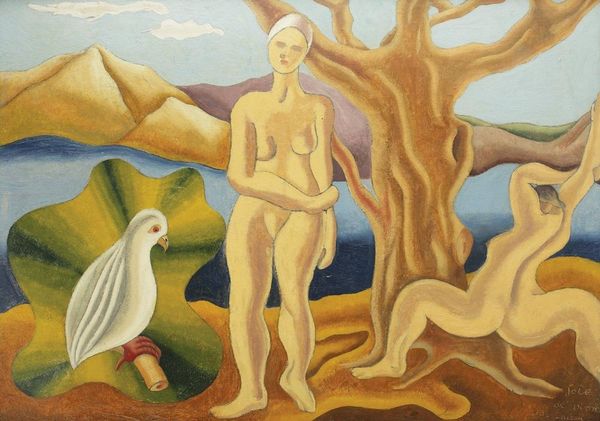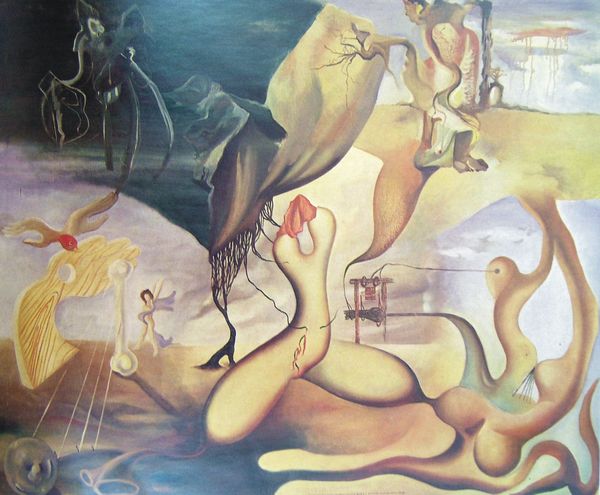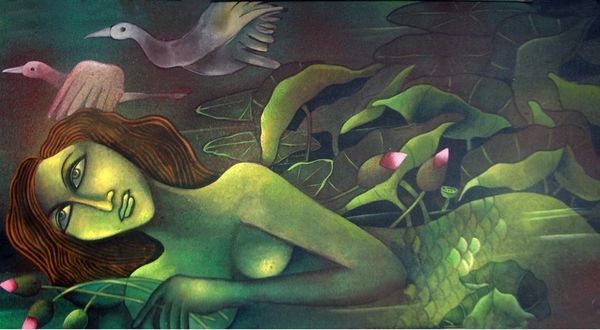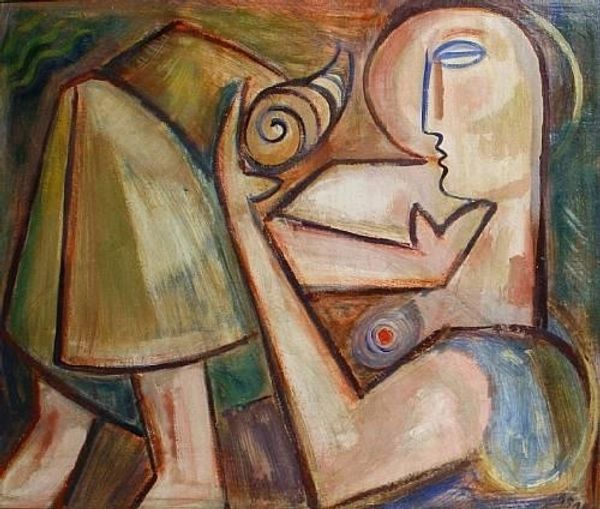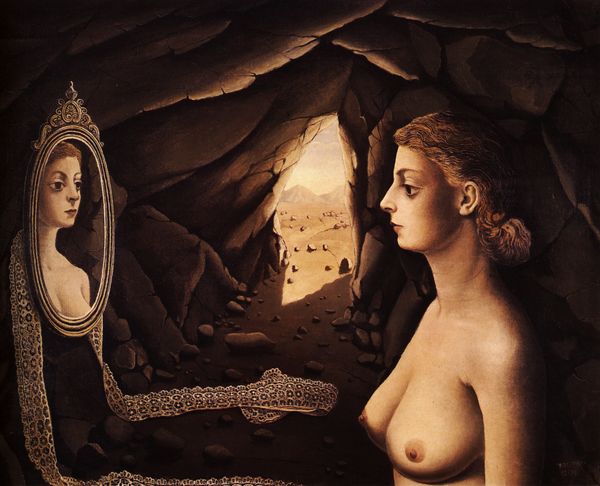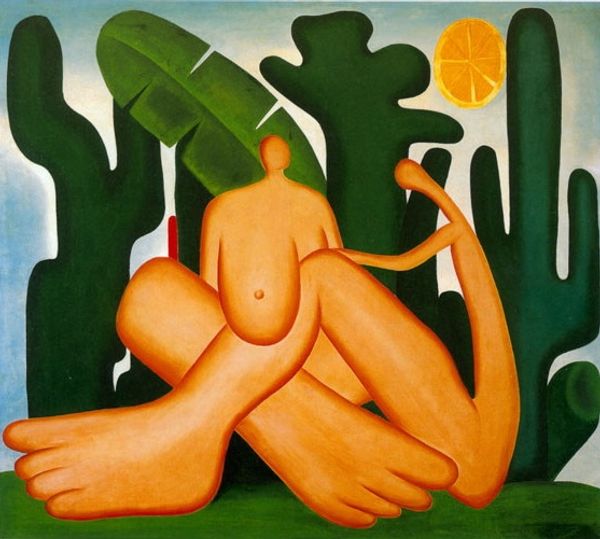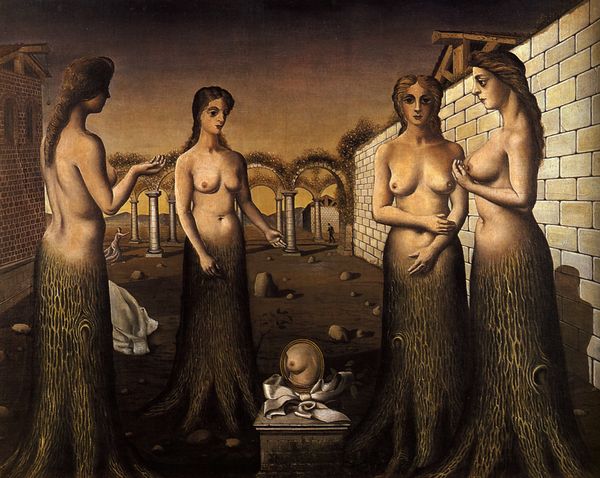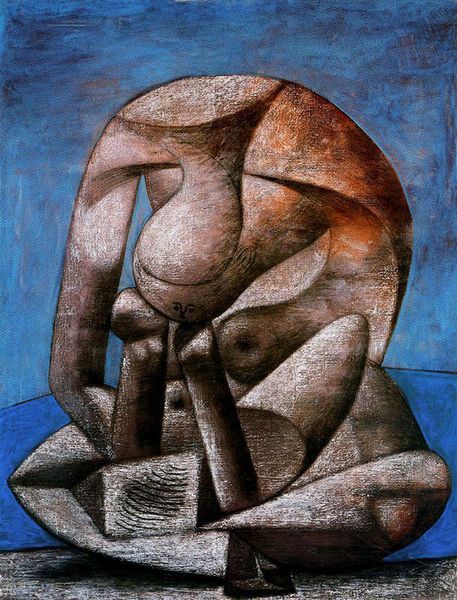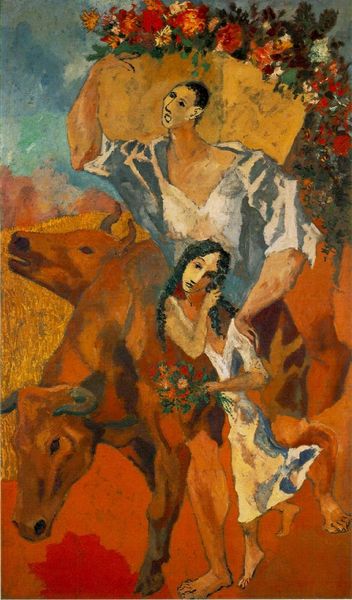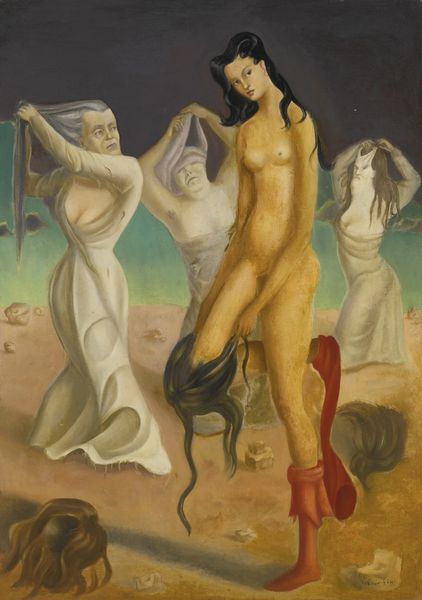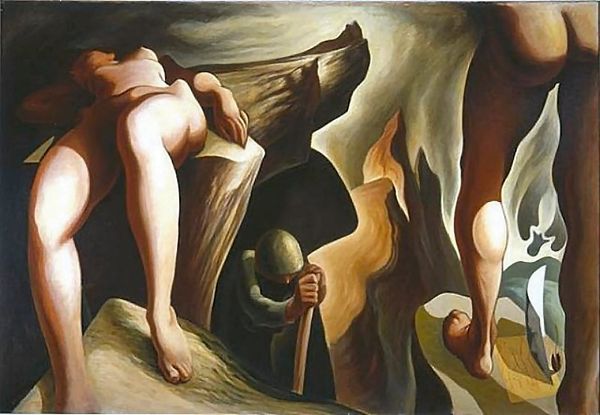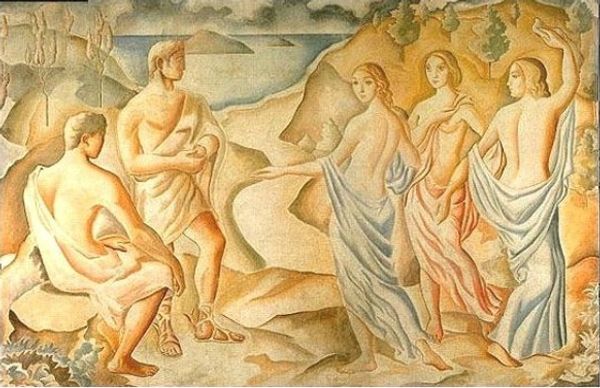
Copyright: Godfrey Blow,Fair Use
Editor: This is Godfrey Blow’s "Return of the Prodigal," created in 1997 with oil paint. It’s certainly striking with its landscape of nude figures and... ambiguous shapes. I'm curious about the materiality here – what sort of meaning do you see in Blow's choice of oil, especially given the expressionist style? Curator: It’s important to consider Blow’s process and the socioeconomic context of Australian art at the time. Oil paint, readily available and relatively affordable, aligns with a Neo-Expressionist return to accessible materials. The expressive brushwork is evident. Think about the physical labor involved – the layering of paint, the gestures captured. Does the handling of the oil suggest a specific commentary on the tradition of landscape painting in Australia, perhaps challenging its established norms by introducing these vulnerable human figures? Editor: That makes sense. It’s a clear departure from idealized landscapes. But these figures seem… rough. Almost uncomfortable. Is it a challenge to the traditional nude within painting itself, through these deliberate material and stylistic choices? Curator: Precisely! Consider the consumption of images. Is Blow commenting on the viewer's gaze? The rawness challenges easy consumption. This painting’s power rests not just in the figures themselves but also in how their materiality exposes the constructed nature of the artistic image, forcing us to confront labor and production. Editor: So, he’s not just painting nudes, he’s critiquing the entire system that produces and consumes images of bodies? Curator: Yes. Blow isn't simply depicting a scene; he's using the act of painting, the physicality of oil, and a loaded historical style to lay bare the art-making process, its reliance on material and its potential complicity in social power dynamics. Editor: I see the landscape so differently now. Thanks for revealing the context beneath the brushstrokes. Curator: Understanding art is always about looking beyond the surface. In Blow’s "Return of the Prodigal," it requires thinking about how materiality and labor underpin even the most seemingly straightforward representation.
Comments
No comments
Be the first to comment and join the conversation on the ultimate creative platform.
